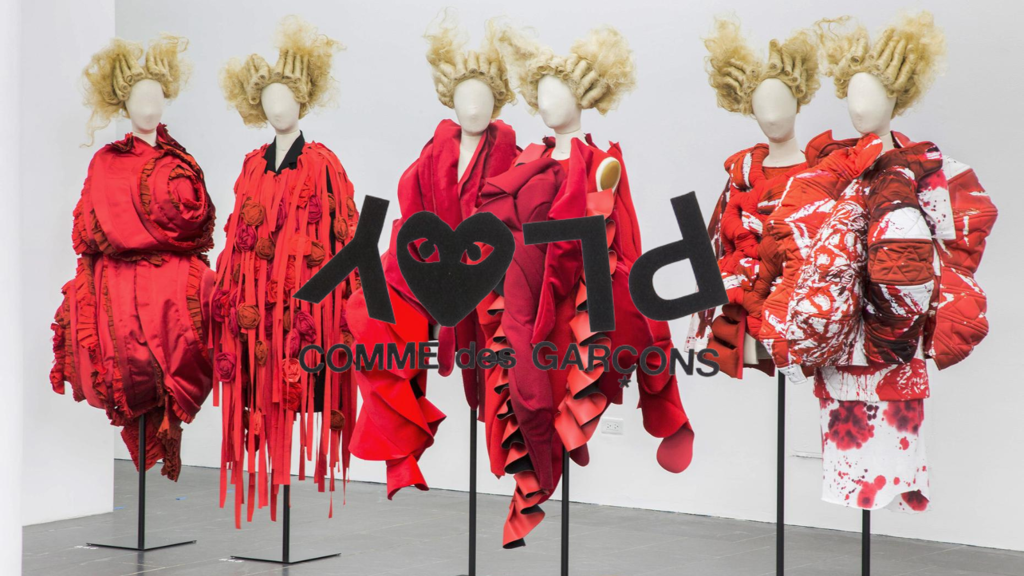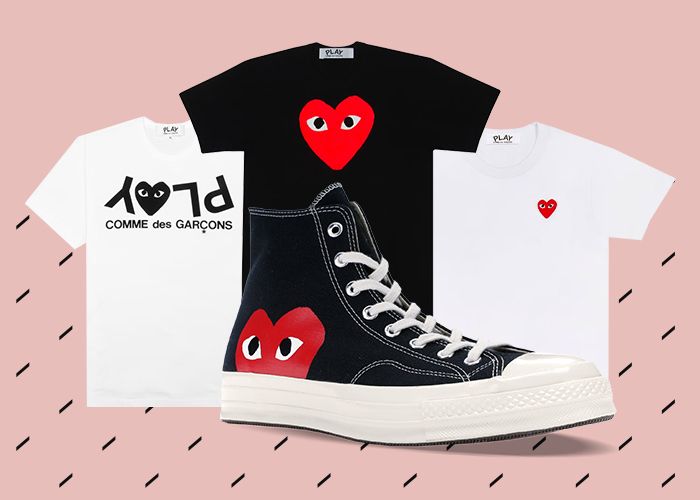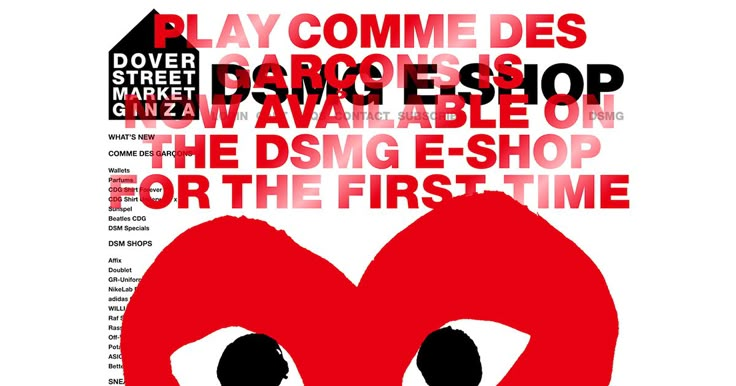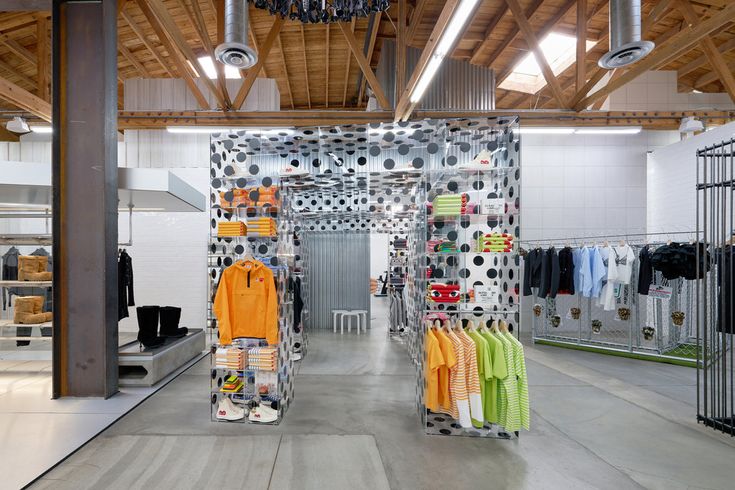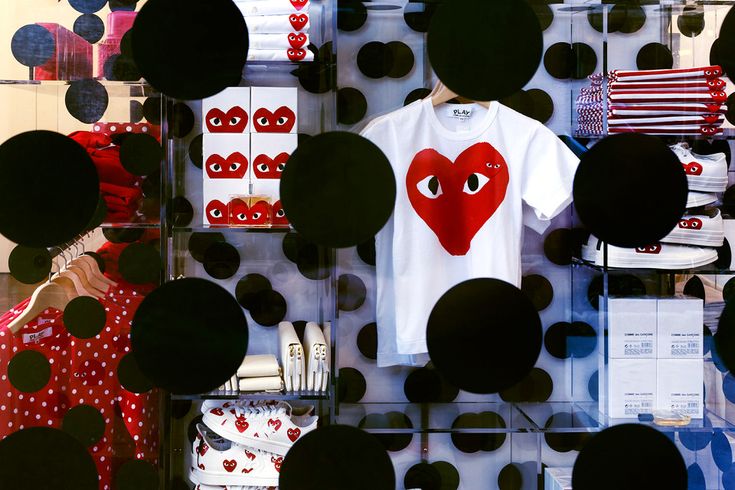How Rei Kawakubo’s radical vision transformed a quiet London street into the beating heart of global fashion culture.
💡 [A Quiet Rebellion Begins]
Long before Comme des Garcons became a cult symbol of avant-garde fashion, its founder, Rei Kawakubo, was quietly rewriting the rules of what clothing could mean.
Born in Tokyo in 1942, Kawakubo never trained as a designer. Her academic background in art and philosophy shaped a mind more interested in concepts than in clothes. When she launched Comme des Garcons in 1969, she wasn’t selling fashion — she was selling thought.
Her collections were fragmented, abstract, and deeply human. Oversized silhouettes, torn fabrics, and sculptural distortions challenged conventional beauty. “I create out of a feeling of dissatisfaction,” Kawakubo once said — a declaration that became the brand’s lifelong manifesto.
By the time her Paris debut stunned audiences in 1981, Comme des Garcons had become synonymous with rebellion. The Western fashion world, accustomed to glamour and symmetry, suddenly found itself face-to-face with imperfection — and it couldn’t look away.
🏙️ [Why London Was Waiting]
In the early 2000s, London was a city in creative flux. The punk legacy still thrummed beneath its streets; streetwear and art were colliding in new ways; and the boundaries between subculture and high fashion were dissolving fast.
The city’s appetite for the unconventional made it the perfect landing ground for Kawakubo’s next experiment — one that would change the very idea of shopping.
In 2004, together with her husband and business partner Adrian Joffe, she opened the doors to Dover Street Market, a six-floor space tucked inside a Georgian building in Mayfair.
But this wasn’t a store in any traditional sense. It was a living, evolving organism — a “beautiful chaos,” as Kawakubo called it.
🏛️ [The Birth of a New Kind of Market]
Walking into Dover Street Market for the first time felt like entering another world.
Gone were the polished marble floors and velvet ropes of traditional luxury boutiques. In their place stood industrial steel beams, raw concrete, recycled wood, and sculptural installations that stretched from floor to ceiling.
Every corner felt intentional yet unpredictable — a reflection of Kawakubo’s belief that beauty lives in imperfection.
Each brand inside DSM, from Gucci to NikeLab, from Rick Owens to Simone Rocha, was invited to design its own “micro-universe.” The result was an architectural collage of styles and identities. Nothing matched, yet everything belonged.
Kawakubo’s vision was radical: she wasn’t selling fashion, she was curating experience.
🔥 [Beautiful Chaos: Rei Kawakubo’s Design of Disorder]
To understand Dover Street Market, one must understand Rei Kawakubo’s love of contradiction.
She believes that tension — between rough and refined, light and dark, old and new — is where creativity thrives.
This philosophy translated into DSM’s ever-changing interior. Twice a year, the entire store undergoes a transformation. Walls are torn down. Displays are rebuilt. Art installations appear, disappear, and reemerge in new forms.
The store’s very structure resists stability. It refuses to be comfortable. And that’s the point.
Each visit feels like a new chapter, a new provocation. As Kawakubo once put it, “To create something new, one must destroy.” Dover Street Market became her most enduring work of art — one that constantly destroys itself to be reborn.
🎭 [Fashion Meets Performance]
In Dover Street Market, fashion doesn’t sit behind glass — it performs.
Customers wander through curated chaos as if moving through a gallery. They are participants, not spectators.
Staff members, dressed in black Comme des Garcons uniforms, guide visitors without selling to them. Music shifts from ambient noise to underground electronic beats. A staircase might lead to a surprise installation; a rack of coats might sit beside a video sculpture.
Shopping here isn’t transactional — it’s experiential.
At the very top, Rose Bakery adds another sensory layer — the scent of coffee and warm pastries drifting through the avant-garde space, softening the industrial edges with quiet human comfort.
This balance between art and intimacy defines the Dover Street Market experience.
🌐 [From London to the World]
What began as an experiment in Mayfair soon became a global movement.
The success of the London store inspired a new wave of Dover Street Markets across the world:
- Tokyo (2006) — returning to Kawakubo’s roots while introducing Japan to global collaboration.
- New York (2013) — bold, brutalist, and vast, mirroring the creative chaos of the city itself.
- Beijing (2018) — an exploration of modern Chinese culture through Kawakubo’s lens.
- Los Angeles (2018) — a collision of street culture and celebrity influence.
- Singapore (2021) — sleek yet raw, proving DSM’s aesthetic translates across continents.
In 2016, the original London store relocated to Haymarket, transforming a 120-year-old building into a temple of fashion and art. The move only deepened its myth — the market may have left Dover Street, but its spirit remained untouched.
🖤 [London’s Enduring Love for Comme des Garcons]
Few brands have captured London’s artistic heart like Comme des Garcons.
The brand’s DNA — experimental, intellectual, fearless — resonates deeply with the British creative spirit.
Londoners don’t just wear Comme des Garcons; they collect it. They appreciate its ambiguity, its refusal to fit into categories. It’s a city that has always welcomed outsiders and innovators, from Vivienne Westwood to McQueen — and Kawakubo is both.
Her collaborations with British designers such as Simone Rocha and Molly Goddard continue to evolve the dialogue between Japanese conceptualism and London eccentricity.
For many, Dover Street Market has become a cultural home — a place to belong without conforming.
🧩 [Culture, Collaboration, and the Power of the Unexpected]
If there’s one principle that defines Dover Street Market, it’s collaboration.
Brands don’t simply sell products here — they co-create.
Whether it’s Gucci’s maximalist installations, Thom Browne’s theatrical tailoring, or NikeLab’s technical innovations, every label contributes to DSM’s ecosystem of creative risk.
Streetwear and haute couture coexist naturally. A Supreme hoodie can hang beside an Alaïa dress, and somehow, it makes perfect sense.
This mix of high and low, art and street, is what makes DSM not just a store — but a cultural mirror reflecting the times.
🕰️ [Reinvention as Tradition]
In Rei Kawakubo’s world, change is the only constant.
Each season, Dover Street Market tears itself apart to start anew. Installations vanish overnight, new collections emerge, and entire rooms are reborn.
This ritual of reinvention has made DSM a living timeline of modern fashion’s evolution. It refuses nostalgia, yet honors its history by constantly challenging it.
Visitors return not just to shop, but to see what’s changed — to witness the next act in an ongoing performance.
🌸 [Play and Philosophy: The Heart of Accessibility]
While Dover Street Market represents Kawakubo’s high-concept vision, Comme des Garcons Play embodies her playful side.
Launched in 2002, Play features minimalist designs and the now-iconic red heart-with-eyes logo by artist Filip Pagowski.
Through Dover Street Market, the line found a global audience — one that appreciated the simplicity and wit behind its casual pieces.
Play made the Comme des Garcons philosophy accessible without compromise. It bridged art and everyday life, allowing anyone to wear a fragment of Kawakubo’s vision.
💬 [The Critical Eye: Dover Street Market’s Cultural Impact]
Fashion critics and curators have long hailed Dover Street Market as one of the most significant retail innovations of the 21st century.
Suzy Menkes described it as “a museum of fashion that sells what it exhibits.”
Virgil Abloh once called DSM “the original concept store — the blueprint for modern retail.”
What makes it so enduring is its honesty. DSM never panders, never follows trends. It has built its reputation on trust — the trust that creativity, when left unfiltered, will find its audience.
And it has. Artists, musicians, and designers all orbit around DSM’s gravitational pull. It remains a sanctuary for those who see fashion not as a commodity but as culture.
🌍 [The Legacy: Fashion as Philosophy]
Two decades after its London debut, Dover Street Market remains a beacon of creative integrity.
In a world obsessed with speed, it moves at its own rhythm — slow, deliberate, and unpredictable.
Kawakubo and Joffe have proven that fashion retail can be intellectual, emotional, and enduring.
Their work challenges us to see consumption not as an end, but as a beginning — a dialogue between maker, object, and audience.
Comme des Garcons in the UK is more than a story of business success. It’s a story of belief — belief that art can live inside commerce, and that imperfection can be more powerful than perfection.
🖋️ [Epilogue: The Future of Beautiful Chaos]
The future of Dover Street Market isn’t about expansion or scale. It’s about evolution.
As digital retail dominates and fashion becomes increasingly virtual, DSM stands as a reminder of the human side of creativity — the need to touch, to feel, to be surprised.
Rei Kawakubo once said, “The only meaning in life is found in creation.”
Through Dover Street Market, she continues to create meaning — not just for fashion, but for culture itself.
In the quiet heart of London, a revolution still hums — not loud, but eternal.

